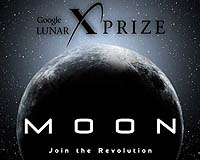 |
Washington DC (SPX) Aug 30, 2010 On 21 September 2010, the Moon Capital Competition will accept entries for the architectural design of an international and commercial lunar habitation. The prime sponsors of the competition who are putting up the prize money are: The Boston Society of Architects (American Institute of Architects) and The New England Council of the American Institute of Aeronautics and Astronautics Other sponsors include: Draper Laboratory, Google Lunar X Prize, AIAA Space Architecture Technical Committee, and The Boston Center for the Arts The competition is open to all comers, although its slant is largely toward space architects and architects who may become inspired to design in space. Moon Capital consists of the planning and design of a Second Generation Habitation on the Moon to support a resident staff of 60 people. The groundbreaking on the Moon will occur July 20, 2069, to mark the 100th anniversary of the Apollo 11 landing. Second Generation means that a prior lunar base exists that can serve as the construction camp and the assembly point for building Moon Capital. This assumption means that the project designers do not need to address the means of delivering materials and construction equipment to the site; the technology and transportation capability exists to assure these deliveries proximate to the construction site. The primary purpose of Moon Capital is to provide a permanent commercial, science, and technology development facility on the Moon. Up to now, scientists and engineers have conducted lunar research almost exclusively from Earth. Certainly, the Apollo Astronauts returned over 300kg of lunar materials to Earth, which have provided a subject for study for over 40 years. However, lunar science goes far beyond picking up rocks for return to Earth; and lunar technology development has barely begun. The scientific and technological disciplines have matured to where they can be far more productive and serendipitous if these professionals can do their work directly on the Moon. Moon Capital arises from a concept of the evolution of lunar Habitation and Space Architecture. The First Generation Habitation will take the form of a largely government-driven lunar base that currently appears on the NASA exploration timeline for a construction start in the 2030s or later. This base will provide habitation elements that include rigid, pre-integrated modules, deployable or inflatable structures, and the reuse of lunar lander parts. The first generation base can provide some manufacturing and assembly of modules and components for the Second Generation Habitation: Moon Capital. However, mass delivered out of the gravity well of Earth is always at a premium in space, so any design decisions that reduce landed payload-mass and mass that the construction process must move will contribute to the success of the project. As the Second Generation Habitation, Moon Capital represents an international and commercial effort to build a permanent human community on the moon. This community intends to achieve a much broader scope of endeavor than the First Generation base. It will support an entrepreneurial and commercial activity that can become the forerunner of a true in-space economy. Moon Capital will be much more advanced in achieving self-sufficiency such as food production and regenerative life support. By placing the Habitat Core underground with all the living accommodations, Moon Capital will provide superior protection from the extreme and unforgiving lunar environment. The habitat core will provide common labs for science and engineering that all crewmembers can use and share. On the lunar surface, the commercial modules cluster around the Surface Access Units to which they can make a pressurized connection. Second Generation also means that Moon Capital will serve a multigenerational population; the staff can come with their families. Co-locating children with their parents at a lunar base becomes an essential step toward truly breaking the bonds of Earth and becoming a space-faring species. The commercial activities that Moon Capital will support include: + Excavation and construction for the Moon Capital habitation, + Deployment and operation of scientific facilities such as a far-side radio telescope or a north-pole far-infrared telescope. + Supporting scientific surveys of the surface by providing transportation, field habitats, and operations, + Prospecting for minerals, + Extraction of resources such as water from polar ice or oxygen from regolith + Provision of fuel for surface rovers, lunar ascent vehicles, and interplanetary spacecraft. + Growing food, + Operating recycling processes and systems, + Manufacturing equipment for other commercial entities to use in their proprietary labs modules. + This compilation is just a start. Once people settle and live permanently on the moon, the pioneers will think of many more beneficial and profitable activities that they can undertake on Earth's only natural satellite.
Share This Article With Planet Earth
Related Links Commercial Space Gateway Moon Capital Competition Mars News and Information at MarsDaily.com Lunar Dreams and more
 Caterpillar Joins Sponsors Of First Expedition
Caterpillar Joins Sponsors Of First ExpeditionPittsburgh PA (SPX) Aug 24, 2010 Astrobotic Technology, a Carnegie Mellon University (CMU) spin-off company has announced that Caterpillar will be a sponsor its first robotic expedition to the lunar surface. The initial Astrobotic mission will revisit the Apollo 11 site in April 2013 with a five-foot tall, 160-lb. robot broadcasting 3D high-definition video. The mission will carry payloads to the Moon and convey the exper ... read more |
|
| The content herein, unless otherwise known to be public domain, are Copyright 1995-2010 - SpaceDaily. AFP and UPI Wire Stories are copyright Agence France-Presse and United Press International. ESA Portal Reports are copyright European Space Agency. All NASA sourced material is public domain. Additional copyrights may apply in whole or part to other bona fide parties. Advertising does not imply endorsement,agreement or approval of any opinions, statements or information provided by SpaceDaily on any Web page published or hosted by SpaceDaily. Privacy Statement |